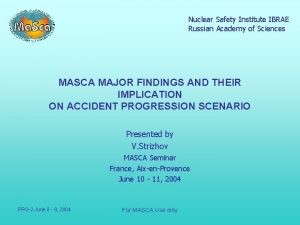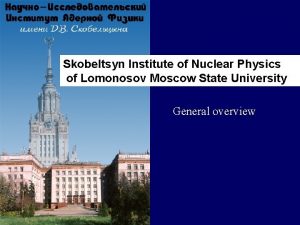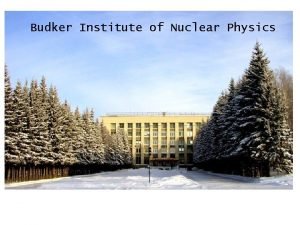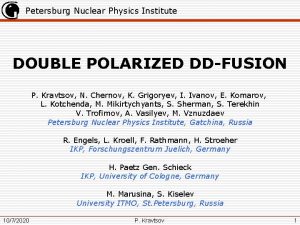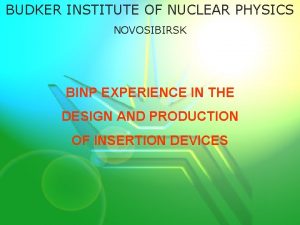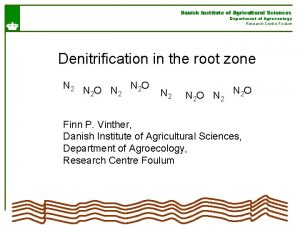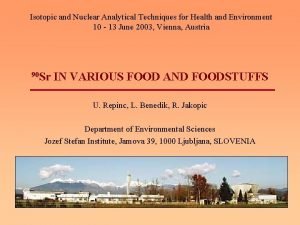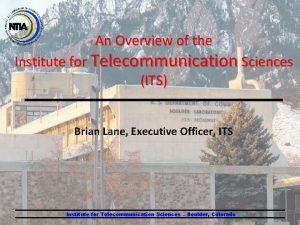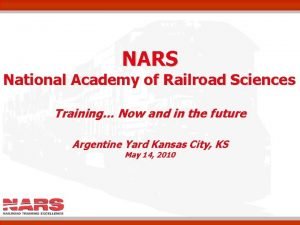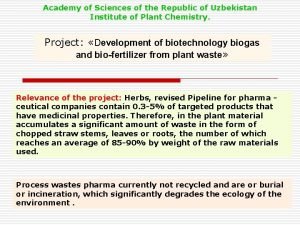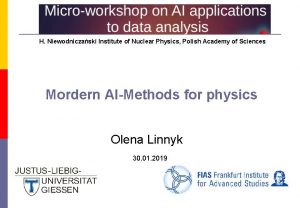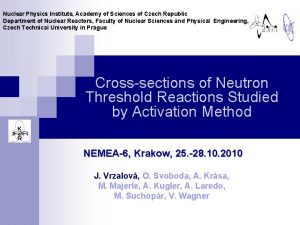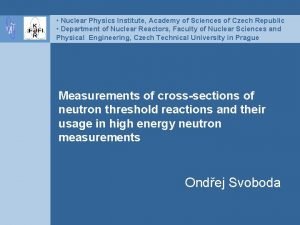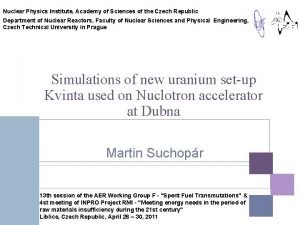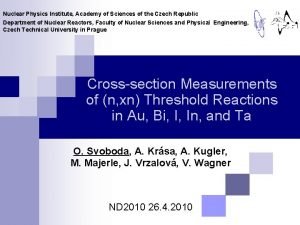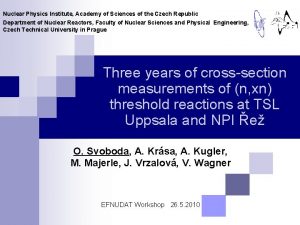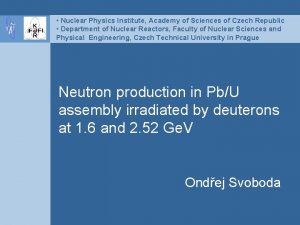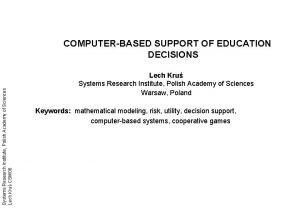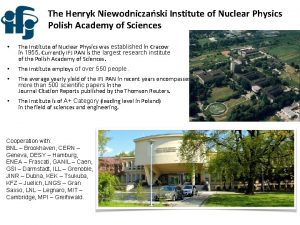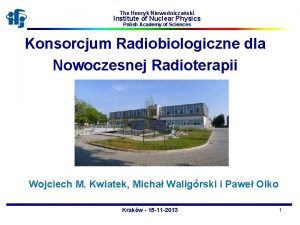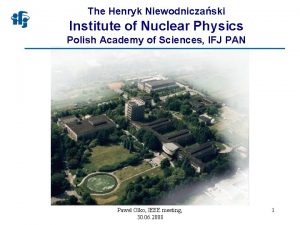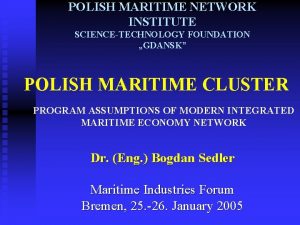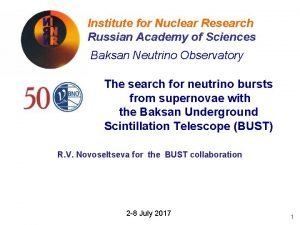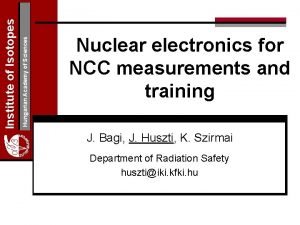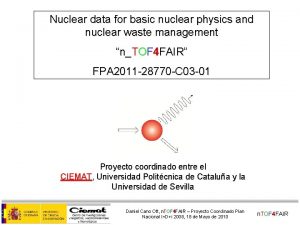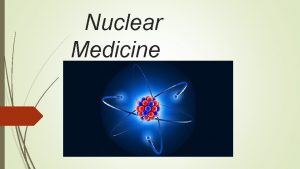INSTITUTE OF NUCLEAR PHYSICS POLISH ACADEMY OF SCIENCES




















![References [1] A. van Hameren, KATIE: for parton-level event generation with k. T-dependent initial References [1] A. van Hameren, KATIE: for parton-level event generation with k. T-dependent initial](https://slidetodoc.com/presentation_image/07dc868c4fd82555b4c078218c47a04f/image-21.jpg)

- Slides: 22

INSTITUTE OF NUCLEAR PHYSICS POLISH ACADEMY OF SCIENCES PARTICLE PHYSICS SUMMER STUDENT PROGRAMME ROOT 4 Ka. Tie Performed by: Elmanova Anna, Elmanov Ilia Supervisor: dr hab. Andreas van Hameren 2020

Table of Contents 01 Introduction 02 About Ka. Tie 03 Theory under Ka. Tie 04 ROOT as a data analysis software 05 Project: applying ROOT for Ka. Tie 06 Conclusion

Introductio n Our goal was to make work with Ka. Tie simpler using ROOT is a common and widespread software. For those who are familiar with ROOT it would be useful to analyze data obtained from Ka. Tie through some special program that would be able to make more automatized some general actions connected with plotting. Our program is designed to achieve this target. 3

About Ka. Tie is a parton-level event generator for hadron scattering processes. Ka. Tie can deal with partonic initial-state momenta with an explicit transverse momentum dependence. This fact causes them to be space-like. It deals with different arbitrary processes and for calculation of the observables the Monte Carlo methods are used. Ka. Tie is mainly written on Fortran and on Python. 4

Theory under Ka. Tie The collision processes of specific hadrons resulting in a specific final state are denoted as Example: Several partonic processes contribute in this example: Example: The separate particles in the partonic processes are referred to by In the example we have and 5 The number of final-state particles in the example is n = 4. We assume that all processes in have the same kinematical situation. The mass of the final state particle is the same for every

Theory under Ka. Tie v v v 6 Differential cross section of a hadron collision process can be written using a factorized formula. Here we consider a single parton-level scattering [1]. Here we can introduce k. T-factorization for a distribution denoted with P: The partonic differential cross section can be dissected:

Theory under Ka. Tie Here is the (3 n − 4)-dimensional differential phase space element for a final state with n particles and masses dictated by Y: The phase space cuts typically consist of minimum transverse momenta, maximum absolute rapidities, minimum distance between momenta in the two-dimensional space of rapidity and azimuthal angle. The flux factor includes the demand that the energy of the partonic process is positive: 7

Theory under Ka. Tie creates event files consisting of a list of weighted phase space points such that Ka. Tie uses importance sampling to reduce the fluctuation of the weight. For each partonic sub process, a probability density Py is adaptively created with the aim that is as constant as possible. 8

Theory under Ka. Tie Then the differential cross section: The creation of the distributions Fy leads to rough estimates of the partonic cross section: 9

Theory under Ka. Tie The calculation of a cross section or other observables requires Monte Carlo tools to perform the necessary phase space integrals. Here we have integration over multiple dimensional space, classical numerical integrational methods are too complicated for calculation in such a problem. Therefore we apply here Monte Carlo methods. Monte Carlo integration is a technique for numerical integration that uses random numbers. Other algorithms often are performed with regular grids, while Monte Carlo randomly chooses points at which the integrand is evaluated [2]. For Monte Carlo integration each realization provides a different outcome. The final outcome is an approximation of the correct value with respective error bars. 10

ROOT as data analysis software ROOT is a dataanalysis framework. It is usually applied for high energy physics. ROOT enables statistical analysis and visualization of a large amount of data. ROOT is mainly written on C++ language. 11

Applying ROOT for Ka. Tie output can be written in a Les Houches event file format with weights for each event. This format is a common one for the particle physics. Therefore, our task was to using this event file automatize graphical output for the data applying ROOT libraries. 12

Applying ROOT for Ka. Tie As far as our event file was held in xml-format, it also used corresponding tags. Standard way of writing into event file also has a “<“ sign which while reading out the event file can be read out as a new tag opening, therefore the reading goes wrong. We have corrected this mistake by changing the part of original Ka. Tie code where the event file is written. Now all the parts with the sign appear under the comment tag. 13

Applying ROOT for Ka. Tie To solve the problem we chose Python programming language because of its simple usage and because it is widespread. It also has flexible communication with ROOT due to the Py-ROOT library. 14

Applying ROOT for Ka. Tie First sub-problem was to organize reading the event file to obtain the necessary information about each of the events. As a basis we have taken LHE-reader module. https: //github. com/diptaparna/lhereader 15

Applying ROOT for Ka. Tie We have added the possibility to read out from event file weight for each event. We also introduced automatized determination of initial particles and jets. Using the module, we have introduce some program that can plot diagrams of the transverse momentum of a four-momentum. 16

Applying ROOT for Ka. Tie We have added the possibility to read out from event file weight for each event. We also introduced automatized determination of initial particles and jets. Using the module, we have introduce some program that can plot diagrams of the transverse momentum of a four-momentum. 17

Applying ROOT for Ka. Tie settings allow us to introduce the initial momentum of the particles in the XY-plain as zero or non-zero. If at least one of the particles has this a non-zero one then we can plot a histogram showing the angle between the momentum of the two particles with the highest value of the p. T and the momentum of the two particles with the least value of p. T. 18

Conclusion What we have learnt: Theory under scattering of relativistic particles Basics of Monte Carlo integration C++, Python and Fortran connection using different libraries Basics of ROOT and Ka. Tie What we have done: Adapted LHE-reader up to our goals Written a program for output of histograms of p. T 19

Conclusion The work upgraded our knowledge in different spheres, mostly relativistic physics and programming applied to data analysis. The work has a good background and can be further improved. The program can be used by those users, who want to simplify Ka. Tie output using ROOT. 20
![References 1 A van Hameren KATIE for partonlevel event generation with k Tdependent initial References [1] A. van Hameren, KATIE: for parton-level event generation with k. T-dependent initial](https://slidetodoc.com/presentation_image/07dc868c4fd82555b4c078218c47a04f/image-21.jpg)
References [1] A. van Hameren, KATIE: for parton-level event generation with k. T-dependent initial states https: //arxiv. org/pdf/1611. 00680. pdf [Accessed: 27. 07. 20] [2] Press et al, 2007, Chap. 7. 21

Thank you for your attention!
 Nuclear safety institute of the russian academy of sciences
Nuclear safety institute of the russian academy of sciences Skobeltsyn institute of nuclear physics
Skobeltsyn institute of nuclear physics Budker
Budker Petersburg nuclear physics institute
Petersburg nuclear physics institute Budker institute of nuclear physics
Budker institute of nuclear physics Normal polish notation java
Normal polish notation java Polish prefix notation
Polish prefix notation Human science tok
Human science tok Lesson 15 nuclear quest nuclear reactions
Lesson 15 nuclear quest nuclear reactions Fisión nuclear vs fision nuclear
Fisión nuclear vs fision nuclear Symbiosis institute of health sciences
Symbiosis institute of health sciences Danish institute of agricultural sciences
Danish institute of agricultural sciences Health and environmental sciences institute
Health and environmental sciences institute Institute for telecommunication sciences
Institute for telecommunication sciences Kafue institute of health sciences
Kafue institute of health sciences Kafue institute of health sciences
Kafue institute of health sciences Hasdk
Hasdk Academy of motion picture arts and sciences benefits
Academy of motion picture arts and sciences benefits National academy of railroad sciences
National academy of railroad sciences Hawaii academy of arts and sciences
Hawaii academy of arts and sciences Putnam academy of arts and science
Putnam academy of arts and science Uzbek academy of sciences
Uzbek academy of sciences National academy of sciences forensic science
National academy of sciences forensic science
